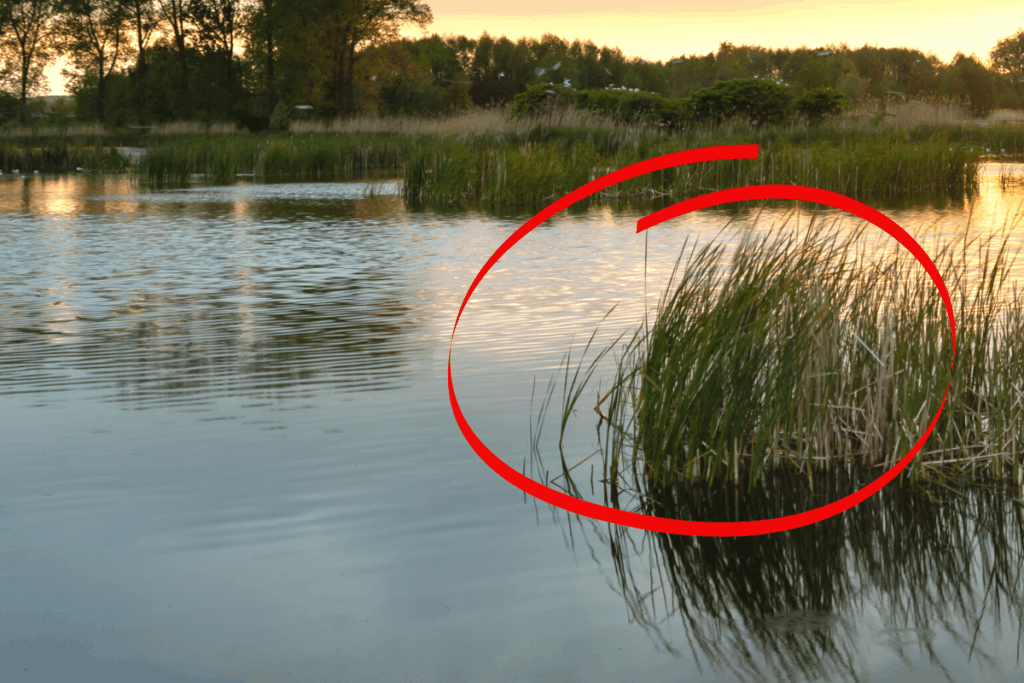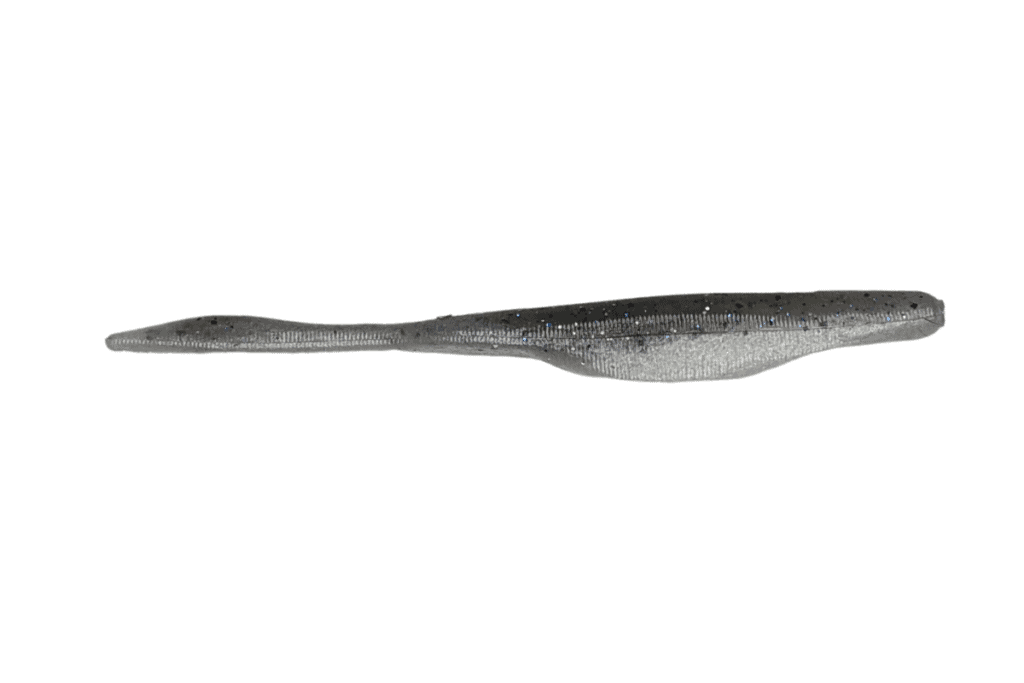Bass anglers know that thick cover is where bass like to hide. On many lakes and rivers that cover is in the form of massive weed beds.
Imagine that there are no weeds. Focus on the hard structure and decide where you would fish if you were only focused on the bottom contours. Then look for the thickest patch of weeds on that structure and anything that is unique or different.
In this article, I will break down in detail how to approach waters that are choked with vegetation.
Mindset
Lakes and rivers that are covered with vegetation can be overwhelming to an angler. The first step is to approach it with a positive mindset and understand the bass are there and you will find them.
Focus on Hard Structure Within the Weedbed
Pull out your topographical map or spend some time scanning Google Earth. Imagine that the water you are fishing has zero weeds. Where would you start fishing if the only thing to factor in was the hard bottom contours.
Looking for key structure is an important step.
Would you start on a point? Would you be looking for channels in a creek arm? Are there some secondary points that look good?
Bass relate to structure, especially access to deeper water, no matter how many weeds may be choking the lake or river.
Once you have decided on a key structural element you are ready for the next step in unlocking where the bass are hiding in these massive weed beds.
The Thickest Spot
Now that you have eliminated a lot of water and chosen a place to start, look for the thickest stand of weeds in that area.
The thicker the better.
To find these key targets you can either use side-imaging sonar or you can stand up on that front deck and search with the trolling motor.
I spend the majority of my time doing the latter. I find that I can scout a large area quickly by putting the trolling motor on high and scan for those thickest places that may not always be clear on sonar.
Transitions Hold Bass in Weedbeds
Other key elements to look for are transitions. Any place that you can find one type of cover or structure intersecting with another is a high percentage area.
For example, is there a stump in the middle of the weed bed? Can you locate two different types of vegetation and focus on where they meet? Can you find the deeper water access that is adjacent to the thickest weeds?
Transition points offer bass an easy place to slip from one type of cover or structure to another.
I often use the comparison to whitetail deer. Deer love to travel along edges. Those edges might be something as simple as a farm lane, but the difference between two types of terrain are important to deer on the move. The same thought process applies to bass.
Anything Unique
As you work through a weed bed, be alert for anything that is unique. This may be something as simple as a small clump of vegetation that makes a point.
You may be able to find a pocket of water along the outside edge. I have focused on pockets in weed beds that have yielded both amazing size and numbers of bass. These pockets may be quite small and look like nothing. My best pocket in a weed bed I have ever found was only the size of a kitchen table, yet the three of us in the boat caught largemouth on almost every cast for about fifteen minutes.
The smallest difference can be the key to a magical day.

Isolated Vegetation
This has got to be my favorite key element to breaking down large weed beds. If you can find a clump of vegetation that is isolated there is a good chance you not only found fish, but you may have found the home of a big bass.
That unassuming clump of weeds standing on its own is often passed up. Drop your lure right in there and get ready for a thump. Some of the best fish I have ever caught have been the result of tossing a jig into a stand of weeds that was easy to ignore.
This isolated vegetation may still have other plant life near it, but there could be some open water around it that creates a clear break between it and the rest of the weedbed. Take a second or two to investigate those isolated patches and you may just find yourself taking a photo with a personal best.
Inside and Outside Edges
If you are struggling with locating any of the above-mentioned features, checking the inside and outside weed lines are always great places to start.
The inside weed line will be between the shore and where the vegetation begins. This is not always easy to reach and sometimes the weeds do start right on the shore itself. Other waters will have a very defined inside weed line and if this is the case with your home lake or river, it can be an excellent place to start checking.
You can find the outside weed line where the vegetation quits due to deeper water. Some outside weed lines are a slow taper, gradually thinning out, other outside weed lines will be defined and end abruptly.
As you fish the inside and outside edges be sure to keep looking for transitions, anything unique, and isolated pockets of vegetation.
Schools of Fish
When you catch that first fish from the weed bed stay in that area and work it thoroughly. Bass tend to school up in this type of cover.
It is all too common to catch one, keep the trolling motor going, and move on.
This is not the time to keep working down the shore. If you find that first fish, it could be the one that reveals the location of twenty more.

Lures for Fishing Weeds
There are a variety of lures that are excellent for probing massive weed beds, but I have found that the following are not only adept at catching fish but locating them in the green jungle.
If the vegetation is emergent or breaking the surface of the water, I always start with a frog. There are times when the bass don’t seem to want to eat the frog, but it still does an excellent job of telling me where they are sitting.
If there is a little space between the tops of the weeds and the surface of the water I often use a buzzbait to get bass to show themselves, but my number one choice for investigating huge amounts of weeds has got to be a soft, straight-tailed jerkbait.
I am partial to the Caffeine Shad because it is heavily impregnated with salt and I can cast it a country mile.
It slithers in-and-around all sorts of vegetation with ease and offers me multiple rigging options. Most of the time I will toss it weightless. When I need to get some more depth I will either use a worm weight or I may even use a swimbait hook with the weight attached to the shank.
All three options come through the vegetation with ease and allow an angler to probe all areas of a weed bed.
Final Thoughts
If you take this approach to dissecting lakes that are overrun with vegetation, I think that you will not only have great success, but you may look forward to tackling the grass when other anglers shy away from it.
Be safe, tight lines, and don’t forget to encourage someone today. You never know how you might change their life forever.
Isaiah 6:8

